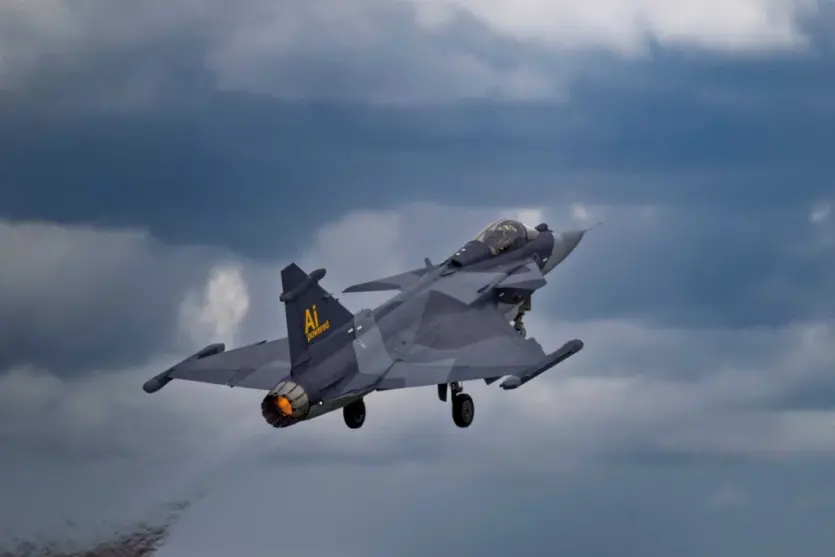
Saab has announced that it has conducted three test combat flights of the Gripen E, an AI-powered fighter jet the first known case use of AI aircraft in the front line.
As part of the Beyond project, Centaur artificial intelligence, developed by the German company Helsing, was integrated into a production Gripen E fighter jet. The flights took place from May 28 to June 3 in Swedish civilian airspace. The battles took place outside the visual contact line.
The project is fully funded by the Swedish Defense Logistics Agency as part of the national program «Future Fighter Concept». The tests included real-time combat operations, including a mission where Gripen E, controlled by AI, faced off against Gripen D, piloted by a human.
During the first two flights, the Centaur AI system controlled the aircraft during maneuvers and provided the pilot with a firing signal. The third flight involved dynamic integration of real-time data and the use of a real Gripen D as an adversary. The team varied the starting speeds, distances, and angles of the targets, while disabling the control channels in some scenarios to test the stability of the AI system.
The Centaur AI worked autonomously, tracking the target using onboard sensors and making appropriate corrective maneuvers. The tests were conducted using standard Gripen E platform from Saab, without the need to create a special test aircraft or limit them to military training grounds. Flying within civilian airspace emphasizes the aircraft’s compliance with safety protocols during operations.
Before that, artificial intelligence was trained in simulations of high-intensity air combat for a long time. According to Antoine Bordes, Helsing’s vice president of artificial intelligence, Centaur gained the equivalent of 50 years of pilot experience in just a few hours. In total, the system has completed more than 500,000 simulated flight hours. During the training, the AI developed a number of tactics and identified unconventional warfare patterns. According to Helsing, the training was specifically tailored to the requirements of modern air combat, with an emphasis on reliable maneuver execution, target prioritization, and adaptability.
The AI software was installed without affecting the certification of flight-critical systems. Peter Nilsson, Head of Advanced Programs Saab Aeronauticssaid that the integration of the project into the aircraft began in March 2025, and the first flight took place only eight weeks later.
The program did not run on a separate standalone processor, but was integrated directly into the avionics infrastructure, interacting with sensors, flight control systems, and communication equipment. This allowed the team to quickly update the software and test changes in the air in short cycles. Saab’s goal was to quickly integrate AI into existing aircraft without waiting for new ones to be built.
Markus Wandt, Saab’s Chief Innovation Officer, took one of the test flights. He reported that the artificial intelligence behaved predictably and used the full range of flight capabilities without exceeding operational limits and without losing communication. In some situations, the system employed creative interaction tactics similar to those used by human pilots, including mock missile shots. Wandt said that while pilots still have a role to play, their advantage over AI is diminishing. He stated that the ability of AI systems to quickly process new scenarios calls into question the adaptability of humans in the future.
Saab and Helsing are currently analyzing flight data from the initial test campaign and plan to improve the behavior of the Centaur system. The companies did not announce the timing of the operational integration, but confirmed that additional flights will be conducted during 2025.
Source: Army Recognition

Spelling error report
The following text will be sent to our editors: